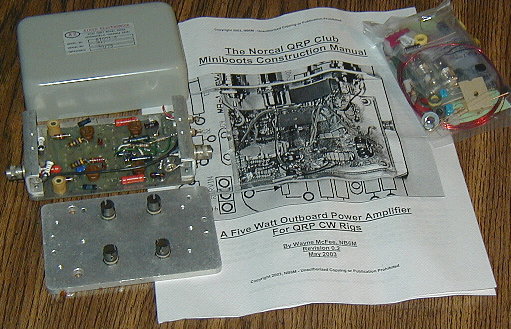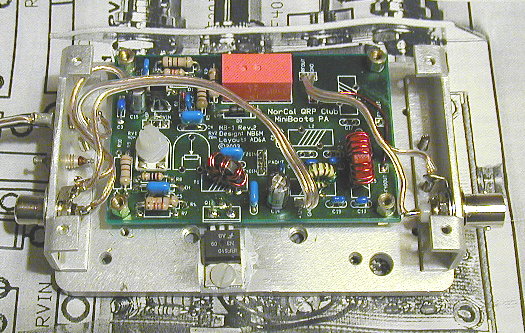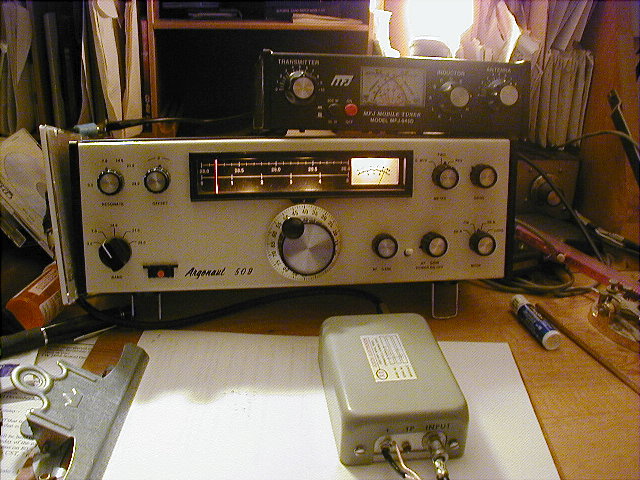
The miniboots kit and Aiken amp.

I may have received one of the last miniboots kits as the kit was discontinued soon after I ordered mine. I was hoping for a bit more power than provided by my Argonaut 509 on the 80 and 40 meter bands. Although not my original plan, I located this AIKEN Electronics amplifier in my junk box in the basement. I had always thought this unit would make a nice small amp. It mechanically had heatsinking for 4 TO-39 type devices. After receiving the Miniboots, the enclosure I had purchased at Radio shack was on the large size for such a small board. It was then I looked for the Aiken amp and saw it looked like a good fit. It hurt a little to remove the TO-39 heatsinks as the Aiken was nicely engineered.
The miniboots as provided is designed for 40 and 20 meters at 5 watts out. I
wanted 80 and 40 meters and was hoping for 15 to 20 watts out. I built up just
the 40 meter part of the kit and mounted it in the Aiken unit to try it out.

You may notice in the picture that I somehow got the wires on the wrong side of
the output transformer. ( It seems to make a difference how you start winding.)
I installed the FET through the bottom of the board and soldered the leads
after the mechanical parts were tightened. This seems to work very well. I
put an RCA jack on the input: the Argo uses RCA jacks for the RF output.
Maybe I will do someday.
The Argonaut provides a T voltage on the rear panel and the Aiken has an unused
feedthrough labeled tp. This looks like a good way to add bias to use the amp
in a linear mode. The T voltage could also be used to switch the relay, so
the unit would stay in transmit mode when the T voltage is present.
It might also be interesting to restore the self bias circuit and see if the
unit might be linear at a certain drive level. This would be very simple and
would work for psk31 or rtty type operation where the drive level is constant.

The miniboots lights up a 15 watt lightbulb with
a couple of watts drive